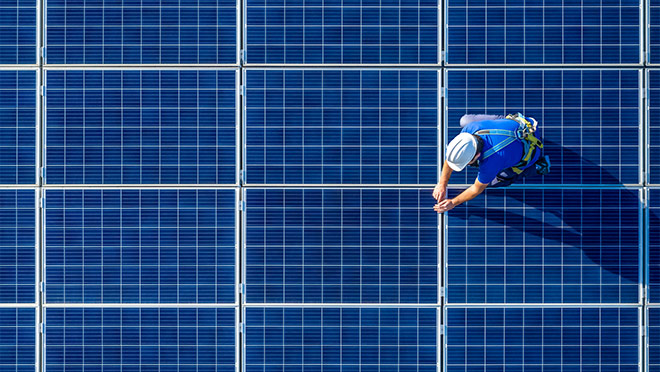Could your facility generate its own electricity?

Funding and strategies for self-generating power
We've got plenty of incentives to help our industrial and large commercial customers save electricity – but have you ever thought about generating your own?
We're relaunching our load displacement program, with incentives aligned with our energy efficiency program. "The goal is still the same – to reduce your load," says Kevin Wallace, senior program manager with BC Hydro. "But with load displacement, we do this by helping you find ways of generating electricity from clean and renewable sources that's then consumed within your site or facility."
Depending on your energy requirements and what type of facility or building you have, the program provides feasibility studies to investigate opportunities for appropriate industrial or large commercial facilities. Then, it provides incentives to fund projects focused on a range of technologies.
Let's look at the key project categories our load displacement program supports:
Solar panels
Solar panels – often known as solar photovoltaic panels or solar PV – use semiconductive materials to convert solar radiation into electricity. They can supply energy directly or can be paired with an energy storage system such as batteries when there's no solar radiation (such as at night) or when a facility is not in use (on the weekend, for instance).
"What we're seeing, especially in the large commercial space, is that there are many opportunities to undertake a solar project," says Kevin. "A lot of these customers have rooftop space that they can take advantage of. The challenge is how much load do they have to displace? Our goal is to find locations where the energy output of the solar PV aligns well with the facility load."
Wind turbines
Wind turbines convert kinetic energy into electricity, or in some cases, mechanical energy. To be effective they need to be mounted in locations with favourable weather patterns. The turbines can be operated individually but are often installed in groups to form wind farms.
Because of the large volume of electricity it produces, this technology can be incredibly efficient, but it's only feasible for specific types of facilities. Kevin points out that "some of our larger customer operations, such as mining companies, are interested in doing it on a large scale. But you need to have the right geography and enough load to handle the amount of energy produced."
Micro hydro
Hydropower systems convert the kinetic energy from flowing and falling water to electricity or mechanical energy. The technology typically uses the same principles as run-of-river hydropower, but only produce five to 100 kilowatts (kW) of electricity. Factors like water flow rate and the height of the waterfall will impact the amount of energy produced.
"Micro hydro clearly requires a very specific geographic location," says Kevin. "So, it tends to be primarily mining companies exploring this technology, but we also see examples of municipalities installing micro hydro."
Waste heat recovery
Here, heat exchangers collect thermal energy from sources such as combustion exhaust, hot water from industrial processes or even municipal sewage. A refrigerant loop is then used to create electricity using an organic rankine cycle (ORC), an organic fluid with a low boiling and vaporization point that runs a steam turbine using low and medium temperature heat inputs.
"Waste heat recovery tends to be used in a larger or heavier process such as industrial or commercial refrigeration, where there's plenty of waste heat to capture," Kevin explains.
Other load displacement options
There are several other displacement options, which tend to be less popular due to either their return on investment or their potential emissions. These include:
- Bio-fuel generators, which are effectively big engines, injecting fuel into combustion engines to turn a shaft and run a generator.
- Biogas boilers, which burn biogas to produce steam and create electricity using a steam turbine.
- Biomass boilers work in the same way as biogas boilers but use a variety of solid fuels including wood pellets, logs and agricultural waste materials like wheat husks or straw.
- Geothermal power plants harvest thermal energy from the earth's core to run steam turbines.
Is load displacement right for your facility?
As we've seen, different load displacement options are potentially only appropriate for specific industries or geographic location. But if you think your facility might be right for a load displacement project, contact your Key Account Manager or Regional Energy Manager, or call 604 522 4713 in the Lower Mainland or 1 866 522 4713 elsewhere in B.C.